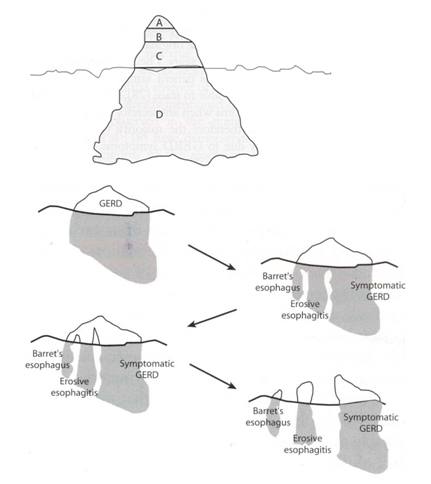Yayın Tarihi: 15.02.2019
Son Güncellenme: 31.01.2024
Yasal Uyarı: Her cerrahi veya girişimsel işlemde sonuçlar kişiden kişiye değişiklik gösterebilir. İşlem öncesinde hekiminizden detaylı görüş almanız önerilir.
Epidemiology in Gastroesophageal Reflux Disease
Gastroesophageal Reflux Disease (GERD) is a spectrum disease ranging from symptomatic disease without mucosal lesions to complications of erosive esophagitis (esophageal stricture, ulceration or Barrett's esophagus).
- Group with typical symptoms such as heartburn and regurgitation but without reflux esophagitis, called non-erosive reflux disease (NERD)
- Reflux esophagitis group with or without complications
- Group with atypical symptoms
- It is quite common (15-20%)
- Severe esophagitis increases with age
- The rate of severe esophagitis over the age of 60 is 75%
- Severe esophagitis is more common in men than women
- Daily heartburn 7%
- Weekly heartburn 20%
- Monthly heartburn 44%
- It is the most common gastrointestinal disease in the United States, following gastroenteritis and cholelithiasis (19 million/year).

Risk Factors in Gastroesophageal Reflux Disease
- The male-female ratio is equal, esophagitis is more common in men (2-3:1)
- Obesity
- Older age (50-70 years)
- Presence of hiatal hernia
- Severity of symptoms
- alcohol use
- smoking
- History of GERD for more than 1 year
- Medicines (theophylline, progestatives, nitrates, benzodiazepines, calcium-channel blockers, non-steroidal anti-inflammatories)
- Some foods (tea, chocolate, oils)
- Postoperative situations (decubitus, naso-gastric intubation)

